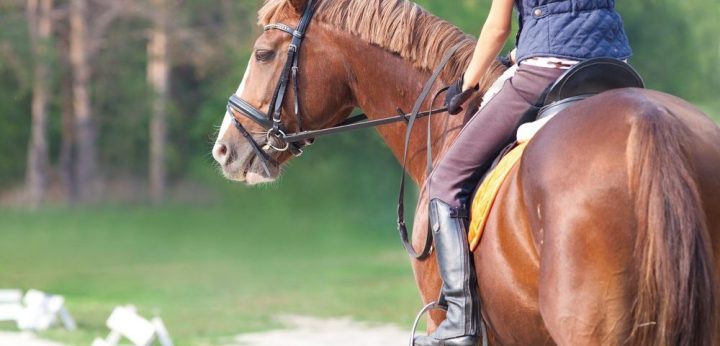I’ve Found Some Success with a New Side Road

I’ve previously discussed how having Ehlers-Danlos syndrome (EDS) means that I often have to take side roads to reach my goals or engage in activities I enjoy. While I used to find that immensely frustrating, I now view it as another challenge to face head-on. In my work with my horse, Cherry, I’ve had to take some side roads to help her learn how to move correctly — like humans, horses have their own physical compensations and issues. We had some success with those, and have been cruising right along. Then recently, we discovered a new side road entirely by accident.
Cherry and I were having a lesson in dressage, the section of eventing that many non-horse people call “horse ballet.” While it may not be the most elegant phrasing, it’s a fairly accurate description of dressage, which requires strength, flexibility, and grace. Dressage is not Cherry’s favorite phase of eventing; she’d much rather be jumping. But the work we do in dressage is incredibly important, so we practice it consistently.
I sometimes struggle to keep correct posture in the saddle because in dressage you need to maintain a particular position while at the same time be relaxed and soft. My body doesn’t like that. It tells me: If you’re relaxed and soft then you will be floppy and unable to maintain your position, and if you want to hold your position, you will be stiff and rigid. I’ve been fighting this battle since I began riding, and its effect is particularly evident in dressage. If I’m tight, my horse is tight. If I’m floppy, I can’t give her the correct directions.
Then during last week’s lesson, I started to do sitting trot instead of posting trot. A trot is two beats, and in posting, you go up and down with the rhythm of the horse’s leg movement. Sitting trot is what it sounds like, but requires much more balance and core strength. It also demands a lot of softness and flexibility, two things that I can do, at least most of the time.
In dressage, we teach a horse to move its body properly — this is known as self-carriage — using its hind end to propel itself forward (like rear-wheel drive), engaging its core muscles, and softening through its back. Think of it in the way that runners train to perfect their technique, or ballet dancers work on their strength and balance. While it may be much easier in the short term to just run or dance, the physical benefits are much greater if you focus on technique, and doing the exercise correctly reduces the risk of injury. The same is true for horses in dressage.
Cherry isn’t a big fan of self-carriage; she’d rather “go for a jog,” but that’s not good for her physically. When I’m riding her, I try to encourage her to correct her movements, with varying degrees of success. Then, during my lesson, my trainer suggested that I sit the trot. Within a few strides, Cherry started to soften and become more round in self-carriage. I softened into the movement of her trot and could support her and help her find her balance. We suddenly went from moderate success to brilliance. It was like I was riding a different horse!
Many of you may be asking, “What’s the big deal?” Well, for my horse’s long-term health and soundness, moving correctly is crucial, just as it is for a human athlete. Finding a way that I can help her move that way more frequently and build her strength is important. It’s my responsibility as a rider to ensure that everything I do is in my horse’s best interests.
For most people, sitting trot is more difficult than posting trot; for me, with my EDS, it’s not much harder. Another rare but important EDS win for me. Sometimes it just takes time and perseverance to figure out how to make my EDS work for me rather than against me.
***
Note: Ehlers-Danlos News is strictly a news and information website about the disease. It does not provide medical advice, diagnosis, or treatment. This content is not intended to be a substitute for professional medical advice, diagnosis, or treatment. Always seek the advice of your physician or other qualified health provider with any questions you may have regarding a medical condition. Never disregard professional medical advice or delay in seeking it because of something you have read on this website. The opinions expressed in this column are not those of Ehlers-Danlos News or its parent company, BioNews Services, and are intended to spark discussion about issues pertaining to Ehlers-Danlos.







Comments